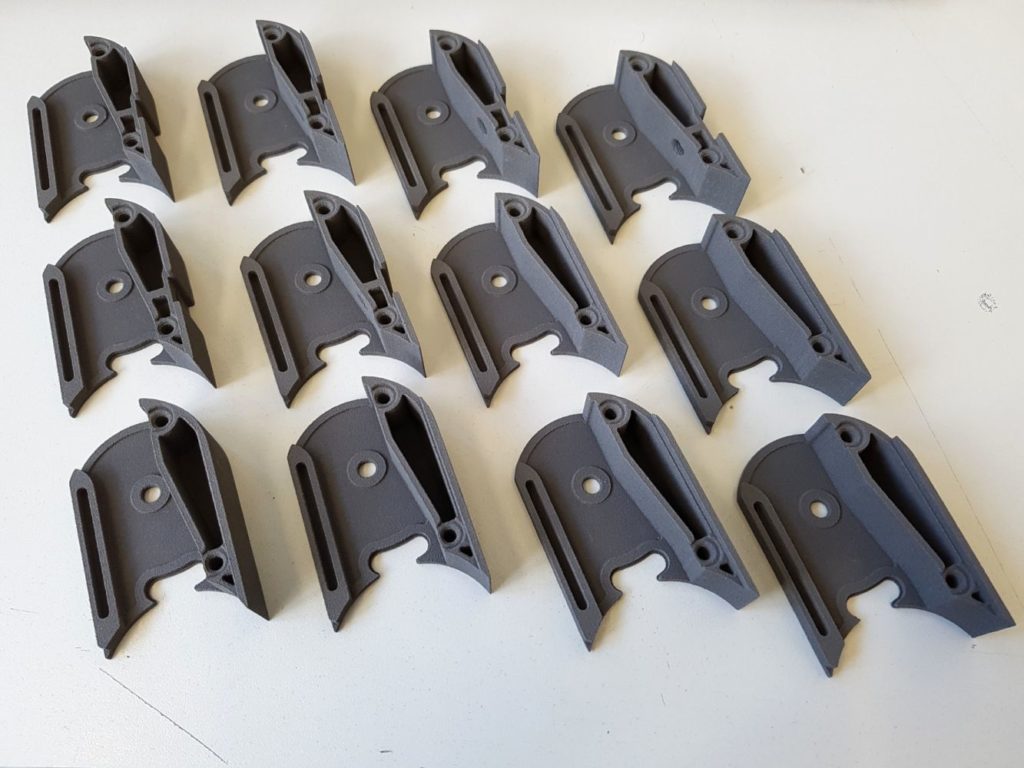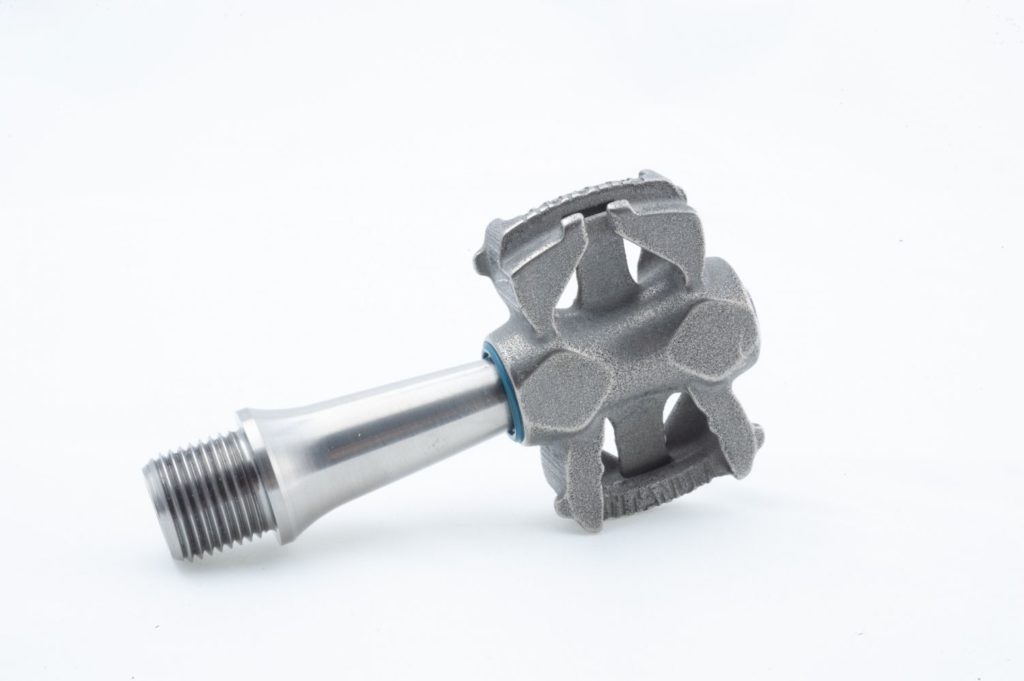Headmade Materials could have a potentially transformative impact on 3D printing. It remains to be seen if the company can make its technology work well at scale and make it commonplace, but, any growth and progress by Headmade will push us all forward.
You see, the firm is commercializing a technology that it calls Cold Metal Fusion. Besides having a cool name, Cold Metal Fusion is exciting since it may be able to turn all polymer powder bed fusion systems into metal printing machines. Your trusty EOS P100 or your Sinterit Lisa could fabricate metal parts with this process. Headmade is therefore potentially transformative for our industry and could make metal 3D printing accessible for many hundreds of firms. We interviewed Headmade’s CEO Christian Staudigel to find out more.

What is Headmade?
We are an industrial deep-tech company that designs/develops, produces and markets advanced materials and 3D-printing solutions, especially our 3D-printing technology Cold Metal Fusion (´Metal SLS´) for real serial production of metal parts.
How do you combine 3D printing and other processes?
Our sinter-based 3D-printing technology Cold Metal Fusion (´Metal SLS´) combines the worlds of 3D-printing for plastics (SLS) with the standard powder metallurgical processes for debinding and sintering to produce complex metal parts in series. Both processes themselves have a long history and are widely spread in the industry. The special thing about our technology is that these two worlds are connected to each other solely by our feedstock material without the need for any process or machine adjustments.
What types of parts do you make?
We want to empower our customers to use our technology in-house to produce better products. These are in particular series from 100 to 100,000 parts of complex products with a wide material selection/broad selection of material. Our focus in this business is the material and we do not see ourselves as a pure part manufacturer. But of course we support customers in the development and design as well as manufacturing of prototypes or small series.
Who are your customers?
Everyone involved in the development and production of metal parts and who benefits from the design freedom 3D-printing allows for. This includes especially players from Powder Metallurgy who already serve a broad range of industries and benefit instantly from the additional design freedom within a well-known technology. Next to them, there are 3D-printing service providers who benefit from the possibility to expand their offerings from prototypes and very small series to larger quantities. And of course end users from classical industries like Medical, Automotive and Industrial.

So, it’s like sintering with a binder?
Exactly and quite a similar approach as metal injection molding (MIM) has been using for decades. Of course except of the green part forming, as we are using 3D-printers for plastics for this.
And you can reuse all support materials?
Yes, we do not need support structures in the printing process and 100% of the unprocessed feedstock can be reused. This is a key factor for an eco-friendly production of metal parts.
And then its sintered and debound? Why is this better than better jet?
The difference between binder jetting and our Cold Metal Fusion technology is mainly determined by the different approaches.
To keep it short: Our process is scalable and runs on standard machines available from multiple suppliers, leading to a lower initial investment while reaching comparable productivity. We also have a higher green part density that results in a high green part strength and lower uniform sinter shrinkage. Since our feedstock consists of micro-granules we can use powders with different shapes and sizes without it affecting our process.
We see our technology ahead of other technologies for many applications and will transport this message further into the market. A network of partners will help us to catch up also on a global perspective.
How do the costs compare to direct metal laser sintering (DMLS), binder jet?
Quite similar to binder jetting and usually much lower than DMLS would be the answer. But frankly speaking, I don’t like the comparison with DMLS as the part spectrum is usually quite different and our big cost advantage lies within the serial production, which is not the scope of DMLS.
Compared to binder jetting, we score with much lower investment costs and at the same time higher part output. Part output and productivity will increase significantly with the next generation of SLS-machines which will hit the market next year.

For what applications is this ideal?
In general for the serial production from 100 to 100,000 parts. But with complex parts also for series far above 100,000 parts, and when we talk about parts made of special alloys like Titanium or Tungsten, then already for less complex parts.
What materials can you use?
The full spectrum of Powder Metallurgy which includes all common materials, in particular Stainless Steels, Tool Steels, Super Alloys, Copper, Titanium and many more. The usage of Aluminum is not widespread in Powder Metallurgy for technical reasons but there are also some Aluminum alloys available.
What materials are you most interested in?
Powdered metallurgy offers us a wide range of opportunities. A strong focus is on standard alloys widely used in different applications like stainless steels, tool steels, titanium or copper. But besides these standard alloys, we will also offer material developments for interested customers with a more specialized field of use, like superalloys and tungsten heavy alloys.
How do you see your future?
We have strong competitors with vast resources, but nevertheless, it is our set aim to become the technology leader for the serial production of high-quality parts! And that means in the end, that we have to push 3D-printing one step further into more applications and more products to leverage the full potential of metal 3D-printing in the manufacturing market.
If you’re a 3D printing service or a manufacturer, I’d recommend that you look into Headmade. For certain parts families and production runs, this technology would let you win on the lowest cost and lowest upfront investment while enabling you to deploy a highly productive manufacturing solution using your existing machines.
Subscribe to Our Email Newsletter
Stay up-to-date on all the latest news from the 3D printing industry and receive information and offers from third party vendors.
You May Also Like
Gorilla Sports GE’s First 3D Printed Titanium Cast
How do you help a gorilla with a broken arm? Sounds like the start of a bad joke a zookeeper might tell, but it’s an actual dilemma recently faced by...
Nylon 3D Printed Parts Made More Functional with Coatings & Colors
Parts 3D printed from polyamide (PA, Nylon) 12 using powder bed fusion (PBF) are a mainstay in the additive manufacturing (AM) industry. While post-finishing processes have improved the porosity of...
$25M to Back Sintavia’s Largest Expansion of Metal 3D Printing Capacity Since 2019
Sintavia, the digital manufacturing company specializing in mission-critical parts for strategic sectors, announced a $25 million investment to increase its production capacity, the largest expansion to its operations since 2019....
Velo3D Initiates Public Offering in a Bid to Strengthen Financial Foundations and Drive Future Growth
Velo3D (NYSE: VLD) has been among a number of publicly traded 3D printing firms that have attempted to weather the current macroeconomic climate. After posting a challenging financial report for 2023,...































